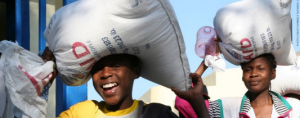
Key Messages
- As the 2018-19 lean season intensifies, Crisis (IPC Phase 3) food security outcomes continue across typical deficit-production areas in the south, west, and extreme north. The main drivers of these outcomes include depleted own-produced food stocks due to poor harvests, macroeconomic hardships, and constrained livelihoods. Typical surplus-producing areas in the north and other parts of the country are experiencing mostly Stressed (IPC Phase 2) outcomes, though some households are facing Crisis (IPC Phase 3) outcomes.
- Since early October, commodity prices continue to increase following the new tax and currency measures. Many wholesalers, supermarkets, and other retail outlets face acute shortages of cooking oil, sugar, wheat flour, and bread among other basic commodities, which is affecting poor household food access in rural and remote areas. The ZIMSTAT annual inflation rate for October went up from 5.39 percent in September to a nine-year high of 20.85 percent.
- In November maize grain prices continued to increase. Since October, the average price increased by 18 percent in FEWS NET sentinel sites. The average November price is about 76 percent higher than the same time last year and 34 percent above the five-year average. Similarly, maize meal prices increased over the past month as well. The average price increased in November by 6 percent average in FEWS NET sentinel sites. The price is about 36 percent above same the time last year and 9 percent above the five-year average. Increases in maize meal prices are attributed partly to increased prices in packaging materials among other production cost hikes.
- The latest international climate forecasts indicate that seasonal rainfall during the November 2018 to March 2019 period across Zimbabwe, southern Malawi, southern Zambia, Madagascar, Lesotho and southern Mozambique is most likely to be below average. The official 2018-19 rainfall season was supposed to begin in October, but rainfall has only recently begun in most parts of the country as of late November. As a result of the late rains, farmers in some parts of the country started planting on the third week of November. Still, the levels of land preparation, planting, and on-farm casual labor opportunities are below normal for this time of the year.


